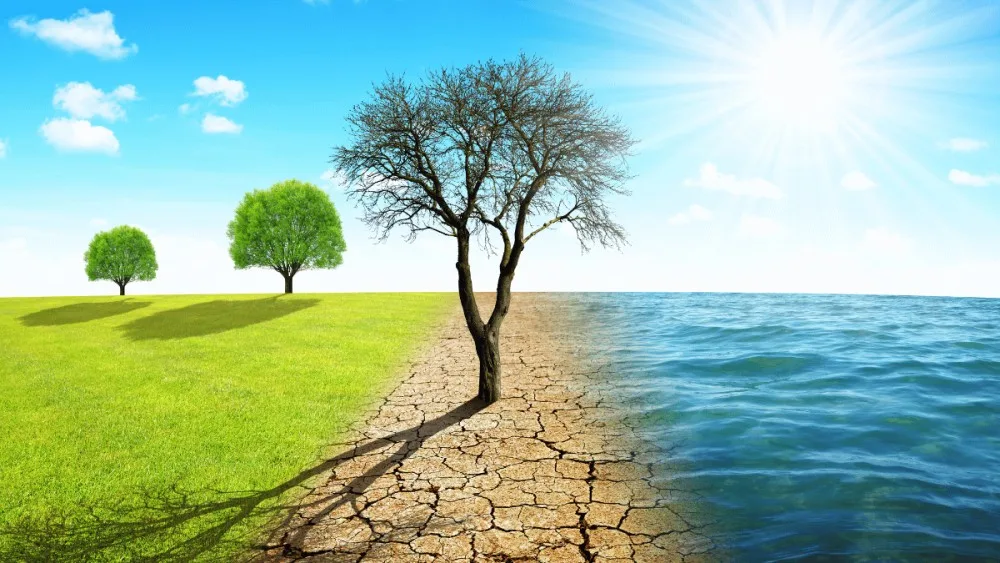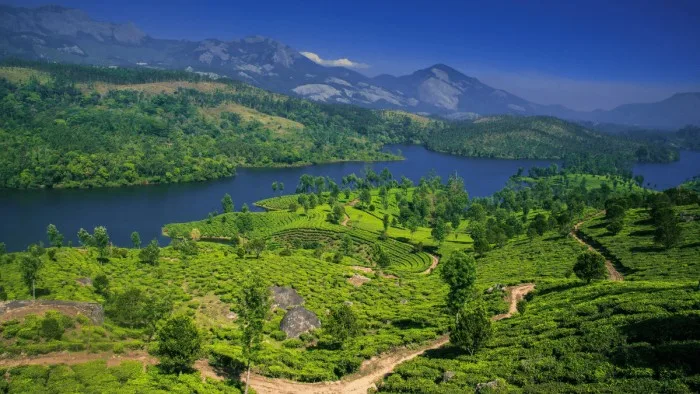FACTORS CONTROL THE CLIMATE OF INDIA
Factor controls climate of India are discussed in detail. Climate is a complex phenomenon and is influenced by a large number of geographical factors such as:
Location and Latitudinal Extent- The mainland of India extends roughly from 8° N to 37°N and the Tropic of Cancer of passes through the middle of the country. Areas lying south of the Tropic of Cancer are warmer due to the closer to the equator. The areas to the north of the Tropic of Cancer are experiencing low temperatures. The coastal areas have mild climatic conditions due to the water bodies of the Arabian Sea and Bay of Bengal.
Distance from the Sea- The areas lying near the coast have a marline climate. On the contrary, interior locations are deprived of the moderating influence of the sea and experience the extreme continental climate. For example, the annual range of temperature at Kochi does not exceed.
The Northern Mountain Ranges– The Himalayan Mountain ranges act as an effective physical barrier for rain-bearing southwest monsoon winds to cross the Northern frontiers of India. These mountain ranges protect India from the bitterly cold and dry winds of Central Asia during winter.
Physiography– The physiography of India has a great bearing on major elements of climate such as temperature, atmospheric pressure, the direction of winds, and the amount of rainfall. Several Himalayan ranges and Hill stations are much cooler than the places located in the Great Plain of northern India. The greatest control of physiography in peninsular India is seen in the distribution of rainfall. The southwest monsoon winds from the Arabian Sea strike almost perpendicular at the Western Ghats and cause copious rainfall in the western coastal plain and the western slope of the Western Ghats.
On the contrary, vast areas of Maharashtra, Karnataka, Andhra Pradesh, and Tamil Nadu lie in the rain shadow side of the western ghats and receive scanty rainfall. The other branch of the monsoon winds rises along the steep slope and makes this area the wettest place in the world. The northward movement is obstructed by the Himalayan ranges, and it advances westwards up the Ganga plain.
Monsoon Winds- The most dominating factor of the Indian climate is the ‘Monsoon winds’ as a result of which it is often called the monsoon climate. The southwest summer monsoon from the Arabian Sea and the Bay of Bengal brings rainfall to the entire country. The north-eastern winter monsoon travel from land to sea and does not cause much rainfall except along the Coromandel coast after getting moisture from the Bay of Bengal.
Upper-Air Circulation- The change in the Upper air circulation over the Indian landmass influences the climate of India to a great extent. Jet streams in the upper air system influence the climate in two ways: westerly jet stream and easterly jet stream.
Tropical Cyclones and Western Disturbances– Tropical cyclones originate in the Bay of Bengal and the Arabian Sea and influence a large part of India. The western disturbance originates from the Mediterranean Sea and travels eastward under the influence of westerly Jet streams. Sometimes it becomes more intense and increases the surface water temperatures of the sea. This warming affects the global pattern of pressure and wind systems including the monsoon winds in the Indian Ocean.

El-Nino Effect– It is a narrow warm current that occasionally appears off the coast of Peru in December. This current is responsible for widespread floods and drought in the tropical region of the world.
La-Nina- La-Nina effect is the opposition to El Nino. It also marks active hurricane season. But in India, the presence of La-Nina is exceptionally Good news.
Southern Oscillation– The meteorological linkage between the Indian Ocean and the Pacific Ocean is often observed. It has been noticed that whenever the surface water pressure is low in the Indian Ocean it is high in the Pacific Ocean and vice-versa. This interrelationship between the Indian and Pacific Oceans is called Southern Oscillations.



